3 Days Argolida – Ancient Olympia – Delphi
Day 1
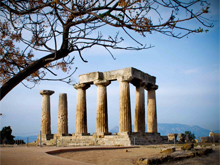 Our private-hire 3-Day sightseeing tour of Argolida-Ancient Olympia-Delphi will begin early in the morning with our door-to-door service, from wherever is the most convenient for you, Athens City Centre, your Hotel, Athens Airport, Port of Piraeus, Ferry Boat or Cruise Ship.Driving with our private-hire (chauffeur-driven) minibus, we take the motorway to Corinth with its lovely sea views along its coastal route, giving you the opportunity to see where the great naval battle of Salamina took place in 480 B.C.
Our private-hire 3-Day sightseeing tour of Argolida-Ancient Olympia-Delphi will begin early in the morning with our door-to-door service, from wherever is the most convenient for you, Athens City Centre, your Hotel, Athens Airport, Port of Piraeus, Ferry Boat or Cruise Ship.Driving with our private-hire (chauffeur-driven) minibus, we take the motorway to Corinth with its lovely sea views along its coastal route, giving you the opportunity to see where the great naval battle of Salamina took place in 480 B.C.
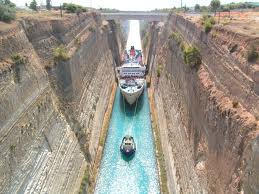 After a pleasant one and a half hour drive, we will make a short stop at the famous 6km long Corinth Canal, which connects the Aegean and Ionian Sea. You will have the opportunity to take some stunning pictures and perhaps try a Greek coffee or an ice-cream.
After a pleasant one and a half hour drive, we will make a short stop at the famous 6km long Corinth Canal, which connects the Aegean and Ionian Sea. You will have the opportunity to take some stunning pictures and perhaps try a Greek coffee or an ice-cream.
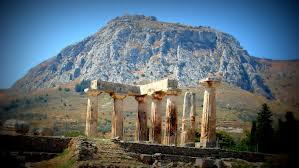 Continuing on, ten minutes later we reach the small village of Ancient Corinth, where the archaeological site is situated. Ancient Corinth itself was a very busy trading city, which led to its cosmopolitan character. It was known as “Wealthy Corinth”, and the reason for its wealth, was its location. Corinth was able to control the only land access to the Peloponnese and so dominated trade in both the Saronic Gulf (to the east) and the Gulf of Corinth (to the west).
Continuing on, ten minutes later we reach the small village of Ancient Corinth, where the archaeological site is situated. Ancient Corinth itself was a very busy trading city, which led to its cosmopolitan character. It was known as “Wealthy Corinth”, and the reason for its wealth, was its location. Corinth was able to control the only land access to the Peloponnese and so dominated trade in both the Saronic Gulf (to the east) and the Gulf of Corinth (to the west).
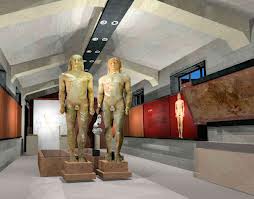 There we will visit the Temple of Apollo, a unique monolithic construction built in 585 B.C., the Agora of Ancient Corinth, the Archaeological Museum, and the Bema of Apostle Paul, who visited the city between 51 and 52 A.D.
There we will visit the Temple of Apollo, a unique monolithic construction built in 585 B.C., the Agora of Ancient Corinth, the Archaeological Museum, and the Bema of Apostle Paul, who visited the city between 51 and 52 A.D.
 Our next stop on our private tour is a visit to the birthplace of the Mycenaean civilization – Mycenae. The ancient city of Mycenae, the golden Mycenae of Homer, is located near the city of Argos. During the reign of King Agamemnon (known from the Iliad), Mycenae was at that time the most important city in Greece. Merchants and sailors from the 15th century B.C., became known from the epic writings of Homer as heroic warriors. Among the most impressive monuments of the Acropolis at Mycenae are the Lions Gate, Treasury of Atreus, and the huge Cyclopean Walls. After visiting the site you will have the opportunity to taste Greek cuisine at a local taverna in the village of Mycenae.
Our next stop on our private tour is a visit to the birthplace of the Mycenaean civilization – Mycenae. The ancient city of Mycenae, the golden Mycenae of Homer, is located near the city of Argos. During the reign of King Agamemnon (known from the Iliad), Mycenae was at that time the most important city in Greece. Merchants and sailors from the 15th century B.C., became known from the epic writings of Homer as heroic warriors. Among the most impressive monuments of the Acropolis at Mycenae are the Lions Gate, Treasury of Atreus, and the huge Cyclopean Walls. After visiting the site you will have the opportunity to taste Greek cuisine at a local taverna in the village of Mycenae.
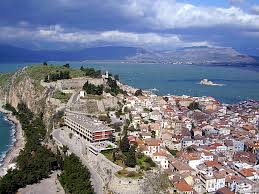 We will continue on our 2-Day Argolida Tour with our private minibus to visit the seaport town of Nafplion. This beautiful town was the first capital of modern Greece from 1829 to 1834 and according to mythology, the most ancient city of Greece. Nafplion is nestled under the shadow of the Palamidi and the Akronafplia forts (castles). The Palamidi is a Venetian built baroque fortress and was completed in 1714, captured by the Turks in 1715 and finally captured by the Greeks in 1822.
We will continue on our 2-Day Argolida Tour with our private minibus to visit the seaport town of Nafplion. This beautiful town was the first capital of modern Greece from 1829 to 1834 and according to mythology, the most ancient city of Greece. Nafplion is nestled under the shadow of the Palamidi and the Akronafplia forts (castles). The Palamidi is a Venetian built baroque fortress and was completed in 1714, captured by the Turks in 1715 and finally captured by the Greeks in 1822.
 You will walk through the picturesque streets and the squares of Philhellenes, Kapodistrias and Syntagma with their neoclassical buildings, tourist and traditional Greek art shops, cafes and restaurants. Take time for a coffee at a cafe looking out over the charming harbour of Nafplion to the fort of Bourtzi, which is situated at the mouth of the harbour. The Bourtzi was built in 1473 by the Venetians to protect the town from pirates and any other invaders coming by sea. The Greeks regained it from the Turks on June 18, 1822. Until 1865 it served as a fortress, and then was used as the living quarters of the executioners of the convicts who were taken from the castle of the Palamidi. From 1930 to 1970 it became a hotel.
You will walk through the picturesque streets and the squares of Philhellenes, Kapodistrias and Syntagma with their neoclassical buildings, tourist and traditional Greek art shops, cafes and restaurants. Take time for a coffee at a cafe looking out over the charming harbour of Nafplion to the fort of Bourtzi, which is situated at the mouth of the harbour. The Bourtzi was built in 1473 by the Venetians to protect the town from pirates and any other invaders coming by sea. The Greeks regained it from the Turks on June 18, 1822. Until 1865 it served as a fortress, and then was used as the living quarters of the executioners of the convicts who were taken from the castle of the Palamidi. From 1930 to 1970 it became a hotel.
We end our first day of your private minibus tour with our arrival at the village of Ancient Olympia, the birth place of the Olympic Games, which is located in the western Peloponnese. In Ancient Greece, Olympia was considered to be sacred ground.
Day 2
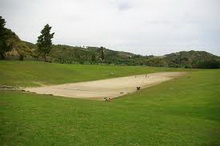 After breakfast, your private 3-Day sightseeing tour will continue on your second day with a visit to the ancient ruins of Olympia. This extremely important religious sanctuary, (known as the Altis), is located in a beautiful area of the western Peloponnese, north of the Alfeios River and Mount Kronos (named after the Greek deity Kronos). Well known as being the site of the Olympic Games in classical times, the most famous games in history.
After breakfast, your private 3-Day sightseeing tour will continue on your second day with a visit to the ancient ruins of Olympia. This extremely important religious sanctuary, (known as the Altis), is located in a beautiful area of the western Peloponnese, north of the Alfeios River and Mount Kronos (named after the Greek deity Kronos). Well known as being the site of the Olympic Games in classical times, the most famous games in history.
The first Olympic Games were in 776 B.C. and were dedicated to the god Zeus. The winners were awarded with a simple wreath made from the sacred olive trees of Olympia – no gold or silver medals. These Games were a celebration of the deeply religious spirit and heroic past of the Greeks – combining the ideals of freedom and the physical development of both body and mind. During these Games war was prohibited and a ceasefire was ordered. In spirit something like the ceasefire which was generally accepted during the Christmas periods of World War1 and World War 2.
The Games were abolished by the Byzantine Emperor Theodosius 1, as they were considered a pagan ritual; however, they were revived in 1896, organised from Athens and have continued every four years since.
 We will visit the Temple of Zeus and the Temple of Hera; here is where the Olympic Flame of the modern day Olympic Games is lit using the reflection of sunlight in a parabolic mirror in front of the Temple of Hera the flame is then transported by a torch to the place where the games will be held.
We will visit the Temple of Zeus and the Temple of Hera; here is where the Olympic Flame of the modern day Olympic Games is lit using the reflection of sunlight in a parabolic mirror in front of the Temple of Hera the flame is then transported by a torch to the place where the games will be held.
For those of you wearing flat shoes, why not join the Olympic heroes of yesteryear and take a run along the original running track of Olympia.
Continuing on we will visit the Archaeological Museum of Olympia, situated opposite the excavation site in a valley northwest of the Kronion hill, one of the most important museums in Greece, representing the long history of the most celebrated sanctuary of antiquity, the sanctuary of Zeus, father of both gods and men, where the Olympic Games were born. The museum’s permanent exhibition contains finds from the excavations in the sacred precinct of the Altis dating from prehistoric times to the early Christian period.
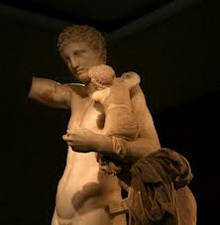 Some of the best known exhibits are the Nike of Paeonius, which was featured on the medals awarded during the 2004 Summer Olympics in Athens, the famous statue of Hermes bearing the infant Dionysus by Praxiteles and the statue of Zeus and Ganymedes. The museum also contains findings from Archaic and Classical periods, a large collection of bronzes and a collection from the Olympic Games.
Some of the best known exhibits are the Nike of Paeonius, which was featured on the medals awarded during the 2004 Summer Olympics in Athens, the famous statue of Hermes bearing the infant Dionysus by Praxiteles and the statue of Zeus and Ganymedes. The museum also contains findings from Archaic and Classical periods, a large collection of bronzes and a collection from the Olympic Games.
After visiting the site you will be taken to a local taverna in the village of Ancient Olympia for a well deserved meal.
We will continue our 3-Day private tour driving towards the town of Patra and cross the Gulf of Corinth via a Ferry Boat or via the Rio-Antirio bridge Europe’s longest multi-span cable-stayed bridge, which was completed in 2004 just in time for the Athens Olympic Games.
After crossing the Gulf of Corinth we will take the National Road towards Nafpaktos and Delphi a pleasant two hour drive following first the coastal route then turning inland passing the calming grasslands and olive groves.
We will end our second day of our 3-Day tour with our arrival at your hotel in the village of Delphi where we spend the night.
Day 3
 After breakfast, we will continue our private 3-Day sightseeing tour, with a visit to the archaeological site of Delphi. The Sanctuary of Delphi, at the foot of Mount Parnassus, was the most famous Oracle of Ancient Greece and is a landscape of incomparable beauty. Delphi was considered the ancient centre, (or navel of the world), a symbol of intellectual and religious unity that reached its peak from the 6th to the 4th century B.C. This thinking prevailed in Thessaly and Central Greece with the religious-political associations of the Amphictyonies (league of neighbouring ancient Greek states) that played a role in the most important moments of ancient Greek history, such as the establishment of colonies.
After breakfast, we will continue our private 3-Day sightseeing tour, with a visit to the archaeological site of Delphi. The Sanctuary of Delphi, at the foot of Mount Parnassus, was the most famous Oracle of Ancient Greece and is a landscape of incomparable beauty. Delphi was considered the ancient centre, (or navel of the world), a symbol of intellectual and religious unity that reached its peak from the 6th to the 4th century B.C. This thinking prevailed in Thessaly and Central Greece with the religious-political associations of the Amphictyonies (league of neighbouring ancient Greek states) that played a role in the most important moments of ancient Greek history, such as the establishment of colonies.
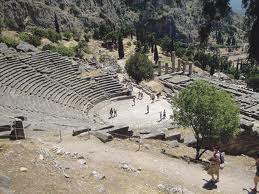
Excavations began in the region in 1860, striking findings came to light that reveal different aspects of the ancient public life. Projects continue until today, with significant excavation and conservational activity.
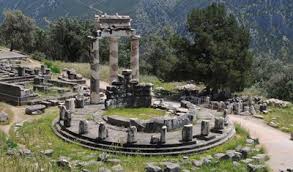 During our private sightseeing tour you will visit The Castalian Spring, and then move on to the main archaeological site for the Temple of Apollo, The Treasury of the Athenians, The Theatre, The Stadium, The Tholos and much more. The Museum of Delphi focuses on the history of the Delphic Sanctuary and Oracle and has on permanent exhibit the remarkable bronze cast of the Charioteer of Delphi.
During our private sightseeing tour you will visit The Castalian Spring, and then move on to the main archaeological site for the Temple of Apollo, The Treasury of the Athenians, The Theatre, The Stadium, The Tholos and much more. The Museum of Delphi focuses on the history of the Delphic Sanctuary and Oracle and has on permanent exhibit the remarkable bronze cast of the Charioteer of Delphi.
After visiting the site we will take you to a local Greek taverna in the village of Delphi.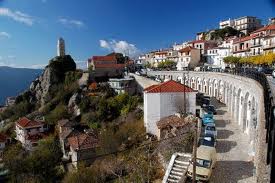
After lunch on our way to Athens we will stop at charming Arachova. There you will have time to stroll around the picturesque town, shop, have a coffee , and take photographs of the truly breathtaking views.
 Next stop of our private sightseeing tour will be the famous 11th century walled Byzantine Monastery of Ossios Loukas, situated near the town of Distomo, in Boeotia. It is one of the most important monuments of Middle Byzantine architecture and art, and has been listed on UNESCO’s World Heritage Sites. The Monastery was founded in the early 10th century by the hermit St. Loukas whose relics are kept in the monastery to this day, although they have been moved from one resting place to another as the monastery and churches grew. The monastery has two large churches – the Church of Panagia and the Katholikon which has some of the best preserved Byzantine mosaics.
Next stop of our private sightseeing tour will be the famous 11th century walled Byzantine Monastery of Ossios Loukas, situated near the town of Distomo, in Boeotia. It is one of the most important monuments of Middle Byzantine architecture and art, and has been listed on UNESCO’s World Heritage Sites. The Monastery was founded in the early 10th century by the hermit St. Loukas whose relics are kept in the monastery to this day, although they have been moved from one resting place to another as the monastery and churches grew. The monastery has two large churches – the Church of Panagia and the Katholikon which has some of the best preserved Byzantine mosaics.
Your 3-Day private tour of Argolida-Ancient Olympia-Delphi will come to an end as we drive back to Athens along the national motorway to your designated drop-off point.
Lunch and admission fees to monuments and sites are not included in the price of your private tour.
Your tour is flexible, giving you the opportunity to change your itinerary according to your personal wishes. Just discuss any changes you would like, with your chauffeur-driver.

